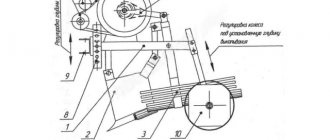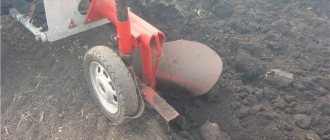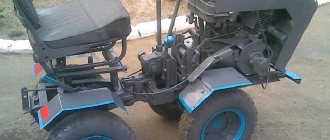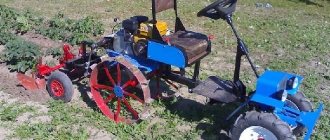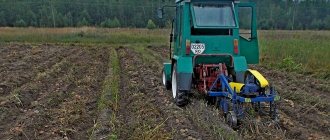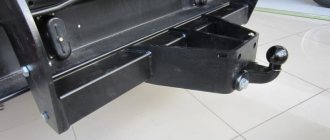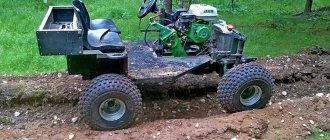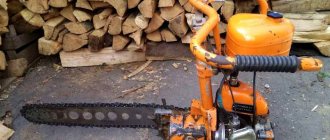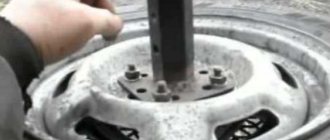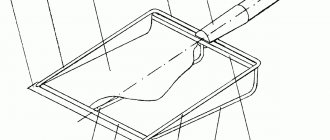Harvesting potatoes is an energy-intensive process. A potato digger mounted on a walk-behind tractor makes this task easier and makes the procedure mechanized. To dig up potatoes with a walk-behind tractor, you will need a special device. It's called a potato digger. There are many videos on this topic on the Internet. The mechanism itself for digging potato tubers with a walk-behind tractor can be different, including self-assembled. To do this, you need to know the basic nuances.
In this article you will find out whether it is possible to make such a potato digger yourself.
Types of potato diggers
In order to plow potatoes, you can also use homemade walk-behind tractors. But among the main types of mechanisms, there are several options that have different characteristics, including the structure of the potato digger.
Main options:
- vibrating (rattle). The main parts are a ploughshare and a vibrating screen. The principle of operation is that the ploughshare undermines the soil, which is sifted through a sieve, leaving the tubers in a kind of sieve;
- conveyor Installed on most types of walk-behind tractors. Device – conveyor, ploughshare. The conveyor platform has a hook-type device, which is used to hold and clear tubers from soil. In light soils it is practically not used;
- ogival. Can be installed on any type of walk-behind tractor. There are no driving units. During work, the soil is undermined with special cutting knives, after which the soil falls on the rods and is sifted, leaving the potatoes. The device is most effective in soil with low density.
In this video you will learn how to make a potato digger: Three standard options form the basis of the simplest potato digger for a walk-behind tractor with your own hands.
Important! Before choosing a device, it is necessary to check the density of the soil that will be processed. The device option is already selected based on the density and model of the walk-behind tractor.
Regarding the types of diggers, a do-it-yourself potato digger for a walk-behind tractor is very rarely created. This is due to the fact that the dimensions must be carefully adjusted, since otherwise the digging procedure will be incorrect. Basically, the cultivator is made on the basis of the other two options.
Owner reviews
Reviews about the types and models given in this article are mostly positive. Each type has its own advantages. All options are distinguished by an affordable price (up to 10,000 rubles), reliability, ease of maintenance and operation.
A potato digger is a useful and practical thing for farming and dacha farming.
Tags : tractor, small, lancet, make, any, installation, fittings, mini, steel, further, similar, diagram, two, apply, features, plow, essentially, quickly, welding, enough, often, photo, beginning, known, therefore, connect, repair, approximately, take, fasten, quarter, base, gear, problems, person, shaft, pieces, piece, immediately, represents, assemble, manufacturers, additionally, landing, make, call, similar, buy, master, manual
Drawings of homemade potato diggers
If you need to understand how to make a potato digger for a walk-behind tractor with your own hands, you will need to look at and check the drawings and calculations in advance.
Any homemade potato digger on a walk-behind tractor must be created based on a drawing. The drawings show:
- dimensions;
- main features of the selected walk-behind tractor;
- connection types;
- angles of inclination of parts and all fastenings.
Drawings are the basis for creating a potato digger.
In fact, the drawing is not just a preliminary drawing, but a project that will be recreated with the specified features and calculations.
Features of screening potato diggers
Any walk-behind tractor with a potato digger has its own characteristics, including a screening design.
Creating a vibration mechanism will require the following tools:
- angle type grinding device;
- welding;
- drill or engraver.
Fasteners will also be needed.
Important! All parts must be of high quality. Otherwise, harvesting potatoes with a walk-behind tractor will be of poor quality, and the mechanism will not last long.
As with any option, a frame is initially created that will carry the entire structure and elements.
Additional and basic elements are already attached to the frame. Peculiarities:
- the entire creation process is regulated by a drawing with all calculations;
- fastenings of any type must be prepared in advance;
- any deviation from the project results in incorrect or incomplete work;
- After creating the device, adjustment is needed.
The important point is that the screening mechanism can have different features depending on the requirements. For example, there is a two-eccentric vibrating digger.
When manufactured at home, the mechanism may have significant differences from the conveyor version. Everything depends only on the model of the walk-behind tractor, as well as on the capabilities of the creator of the homemade mechanism.
To create screen structures you will need welding
Types of devices
There are several types of mounted units for digging up crops, each with its own structural features and principle of operation:
– have the appearance of a plow with a fan-shaped tail made of steel rods. The simplest and most affordable design.
Fan- Screening machines are equipped with support points and wheels, and are also equipped with a special grid located at an angle to the soil.
- Drum type – have a more complex structure and greatly simplify the process of harvesting plants. The potatoes are lifted by the plow, moved onto a grate and then into a rotating drum, where the remaining soil is removed from them. At the end, the clean fruits are poured into a box.
- Conveyor - special blades pry up the layer of soil with root crops, after which the potatoes are transferred to a lattice conveyor.
- Conveyor - equipped with a bucket and a moving belt. Potatoes pass along a moving canvas, being cleared of soil particles and poured onto the ground.
Equipment with conveyor
The conveyor potato digger has a standard appearance, in which the main elements are a ploughshare and a platform with a conveyor. Peculiarities:
- a conveyor is installed on the platform, the type of which is regulated by the requirements;
- a simple device allows installation on almost any version of walk-behind tractors, including domestic ones;
- often used in areas with hard or loamy soil;
- A potato digger for a walk-behind tractor is created strictly according to the specified parameters of the conveyor and platform, as this is necessary for normal digging of tubers.
When creating it yourself, it is worth considering two factors that will affect installation and operation. The first factor is the size of the device, which allows you to mount the mechanism on the walk-behind tractor. The calculation should always be made taking into account the technical parameters. Another factor is the manifestation of versatility. Most homemade conveyor-type devices can be supplemented with secondary elements.
Lancet potato diggers
Lancet structures are the easiest option to create yourself. Main nuances:
- not used for hard soil;
- consists only of a knife, a soil blaster and a grid of twigs;
- the shape of the rods is a fan.
Due to the arrangement of the rods on the mechanism, this option is also called a fan option. Digging potatoes with a walk-behind tractor with a fan attachment is a simple process. After the knife cuts the soil, it goes up along the rods, which allows you to partially sift and capture the tubers.
Important! The size of the gaps between the rods is strictly regulated, since if the structure is incorrect, the potatoes will sift through the device.
The potato planter on the walk-behind tractor must be durable and resistant to loads. If this condition is not met, the fan will deform.
This unit has its pros and cons
Rules of application
Do you think the fan potato digger is effective?
Of course! Not really
To start using the device, you must first properly plant the potato tubers:
- The sowing depth should not exceed 12 cm (with an embankment - no more than 5-7 cm).
- During the growing season, it is necessary to regularly loosen the soil and hill up the plantings, and remove weeds.
- Before harvesting, it is necessary to cut off all tops and other growth from the cultivated area, as well as remove debris (stones, branches).
Expert opinion
Kulikov Vladimir Sergeevich
The digger is immersed to a depth of about 20 cm to effectively collect root crops. The rows of crops should be located in a straight line with sufficient gaps for the wheels of the walk-behind tractor to pass.
If you have a small area with potato plantings, you can purchase an affordable and easy-to-use potato fan digger. A specific model should be selected based on the type and brand of work equipment.
The procedure for making a potato digger with your own hands
Digging potatoes with a walk-behind tractor requires following all the rules for creating a mechanism that carries out the process. The potato planter on the walk-behind tractor is done according to the established plan. The manufacturing procedure does not change, depending on the features of the mechanism. Stages:
- choosing a potato digger option;
- preparation of materials;
- calculations and creation of a drawing, on the basis of which the mechanism will be made in the future;
- creation of a design and fitting on equipment;
- trial work.
A trial digging of potatoes with a walk-behind tractor is a must. Without testing, it is impossible to fully adjust the operation of the unit.
The main point is the creation of a mechanism. Initially, you will need to collect the necessary materials and tools. Next, blanks are created according to the drawings. Each element must have strictly designated dimensions. According to the design, the first step is to create a frame (frame), onto which the rest is already attached, including a knife or ploughshare. After creating the frame, preliminary work with fastenings begins. Only after this the mechanism is assembled and installed on the equipment.
The potato planter is attached to the walk-behind tractor only after preliminary fitting and adjustment according to the parameters. Fastening can be done using separate fasteners or a welded strip.
Criterias of choice
In order not to make a mistake when choosing a potato digger, you should consider several important parameters:
- Plot size. Large areas will require more powerful and productive equipment, and the use of fan models may not be profitable.
- Humidity level. Budget units may have difficulty processing wet soil.
- Land quality. On hard ground, many simple diggers are ineffective.
- Operating principle of the device.
- User's available budget.
- An option for clearing fruits from the ground. Some equipment models may show different harvesting efficiencies on clay, chernozem, sandy soils and loams.
- Digging mechanism size. Wide models are preferable for large areas, and for small garden plots it will be enough to purchase simple single-row devices.
- The presence of wheels to facilitate the operation of heavy equipment.
- Manufacturer reliability.
- The method of attaching the digger is screw or welding.
- Relevance of technology. Old units may not interact well with modern equipment.
A homemade mechanism should consist of several basic elements
Any homemade version has a basic set of elements that will be required during manufacture. List:
- a metal channel, preferably a stainless steel type, with a thickness of about 1 cm;
- metal-type corners of 3 and 4 cm in cross-section;
- steel reinforcement with a diametrical cross-section of 1 cm;
- sheet metal 0.5 cm;
- set of nuts and bolts.
Additionally, you always need tools, including standard ones, for example, a wrench for the size of bolts and nuts.
You also need a tape measure and a grinder. Any type of welding machine is often used. This can be either a gas-electric welding machine or a portable electric welding machine. To create fasteners and holes you will need not only a drill, but also a set of drills that are suitable in size.
All materials must be prepared before work begins. The list is compiled on the basis of the created project, that is, if the drawing is drawn up according to an individual plan, then the set of materials will also be specific.
The specified standard set of materials will be needed to create a standard device.
Important! Digging potatoes with a walk-behind tractor can only be done after the device has been fully assembled and all parts have been adjusted. A preliminary launch and verification of the operation process under the required conditions will also be required.
Additional functions
Potato digger for MTZ walk-behind tractor
A potato digger is a multifunctional gardening tool that simplifies many tasks. You can replace an outdated shovel and fork using the Harvest potato digger. It allows you not only to dig up root crops, but also to dig up beds and loosen the soil. Design features:
- forks made of tool steel with fine teeth (7 pieces);
- a pedal on hinges that acts as a lever.
The furrow width is 28 cm, the loosening depth is 25 cm, the weight of the unit is 3 kg.
Long pins not only dig up the soil, but also break up clods of earth, making the soil homogeneous. The bush of the plant is easily removed from the ground; the potatoes are not pierced or cut. When moving to the next potato bush, you do not need to lift the tool; you just need to step back and pull it towards you.
Another modern unit is the “Farmer”, which combines 5 tools. They can dig potatoes, harrow, loosen and turn up the ground. In addition, it is used for spreading manure. To activate the “potato digger” function, you need to secure the plates along the arched lever. Pressing the lever raises the forks upward. Shaking the tool by the lever releases the potatoes from the soil.
Design parameters:
- length of teeth and working blades – 25 cm;
- depth of penetration into the ground – 20 cm;
- size – 120 cm;
- unit weight – 3 kg.
There are also potato diggers that work on a different principle. They are a versatile alternative to a shovel. The entire unit rests on one metal pin stuck into the ground. Rotating the handles clockwise moves the curved teeth made of hardened steel. The tubers are picked up along with the soil and turned to the side.
